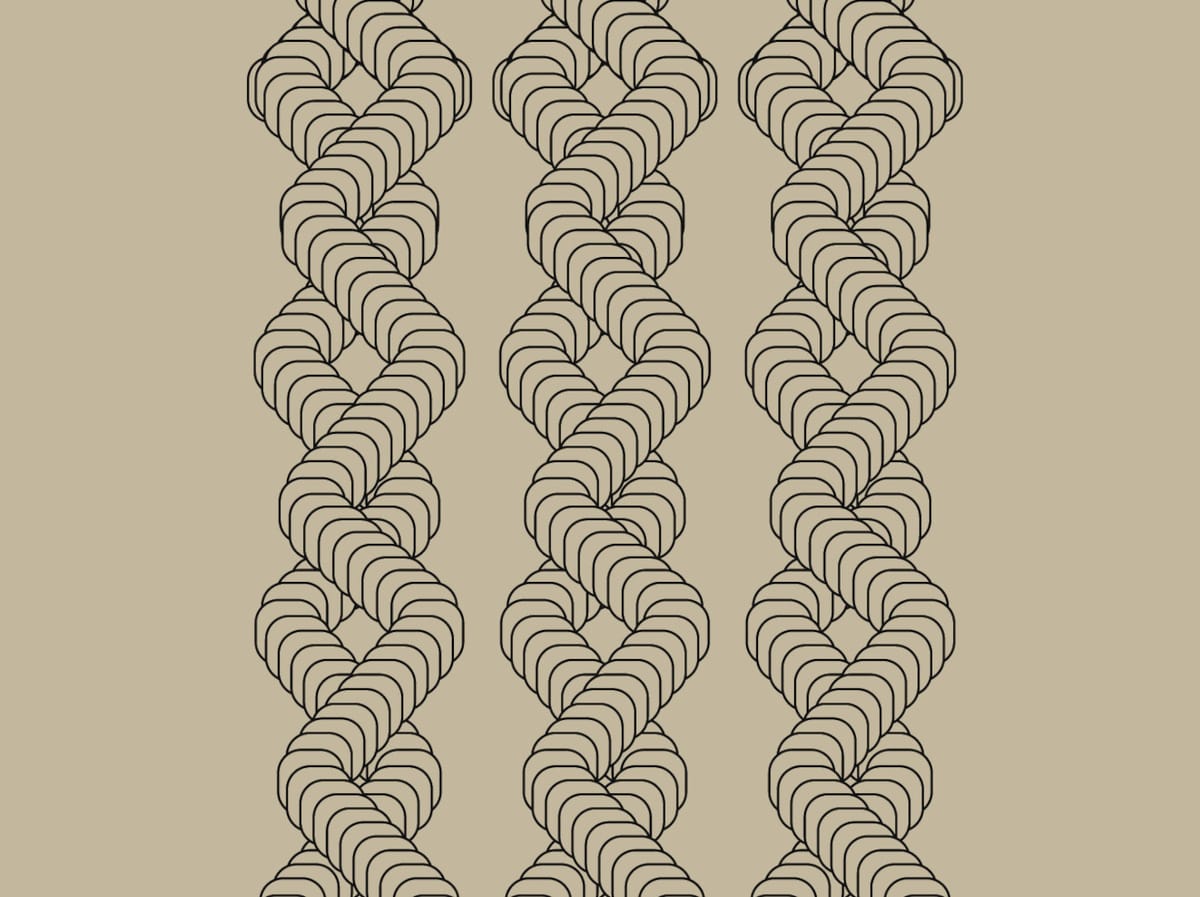The Collectors and the Collective
The art world today is constrained by the static economic and legal structures that surround it. By redesigning ownership from a one-time transaction to an ongoing relationship, PCOArt aims to seed an alternative.

It’s by now a cliche to ask where an artwork begins and ends. “Artwork” is an infinitely elastic term, spanning everything from primordial rock paintings to generative pixel mosaics to participatory social experiments to AI models. By contrast, the economics that underpin art remain rigid: art can either be translated into a tradeable asset with a certain—usually singular—author and owner, or it remains apart from the world of market and economy.
PCOArt (that’s Partial Common Ownership of Art) is an endeavor seeking to overcome or at least change the shape of those limitations. Instigated by the Future Art Ecosystems (FAE) team at Serpentine Arts Technologies in partnership with RadicalxChange, PCOArt is a collection of primitives and practical experiments laying out a new set of economic principles that illuminate rather than obscure art’s fundamentally relational character.
At the core is a new set of mechanisms that fundamentally alter the terms of owning an artwork. Under the standard model, what a collector gets when they purchase an artwork is the exclusive, permanent rights to it. Under the terms of PCOArt, what they get is a temporary license to “steward” the artwork, the terms of which may include any set of artwork-specific obligations that advance the larger mission of a given practice. PCOArt’s standard terms include the auctioning of the license at the end of a stewardship cycle (although the incumbent steward is always free to bid on it and attempt to renew their stewardship role), and the payment of an honorarium to the broader community involved in an artwork's creation at the beginning of each new cycle. Once the license is passed on, the steward remains part of the growing community created through the artwork’s circulation.
In contractual terms, PCOArt shifts art ownership from a one-time transaction to an ongoing dynamic among diverse stakeholders. Absolute owners are recast into time-bound stewards; artists who have been atomized by standard art market practices can reestablish their inherently networked identity. “Art, as an economic asset, emerges from a collaborative network of creation,” says Victoria Ivanova of FAE, “It’s not just one entity, such as the artist, who produces the artwork. Instead, there’s a broader context in which the artist and those who invest into their work operates, and they owe some obligation to that network. PCO aims to make this network visible and valued.”
An artwork’s sale would typically mark its transformation into a financial asset forever siloed from this network, with the owner free to hoard it in a freeport until the end of time. This new model, in contrast, creates a market around an artwork while still allowing value to flow among artists, stewards, and the broader network integral to the artwork's creation, whose contributions may include supplying inspiration and context for the artwork, contributing informal or invisible labor, and participating in producing and maintaining the artwork.
This shift from permanent ownership to temporary stewardship might seem radical, but it's not without precedent. The conceptual art movement of the 1960s already pushed us to think of art as more than just physical objects. “PCOArt extends this tradition,” Ivanova notes, “creating a framework where the artwork's value lies in the network of relationships it generates and sustains over time.”
Consider “Cloud Imagination,” a pilot project by artist Tomas Saraceno. Created in collaboration with communities in Salinas Grandes and Laguna de Guayatayoc, Argentina, who are fighting against lithium extraction on their ancestral lands, the artwork's value is inextricably tied to its social context. Under a PCOArt framework, stewards of “Cloud Imagination” wouldn't just be buying an object, but participating in an ongoing dialogue with these communities and bolstering their cause.
PCOArt is also a response to technological and social shifts bigger than the art world itself. In an era of AI-generated art and collaborative online creations, traditional notions of authorship and copyright are increasingly strained. "PCOArt provides a workable tool for distributing value and authorship differently from existing frameworks of copyright and IP," Ivanova argues. New forms of networked production are on the rise, and we will need new economic frameworks to accommodate them.
But, as with any attempts to build a new institutional primitive from scratch, there are hurdles that PCOArt will have to overcome. Initial attempts to implement the model solely using blockchain technology proved challenging, leading the teams to develop solutions in both Web2 and Web3 frameworks. The model itself also had to shift: “The end product actually doesn't look like PCO in our napkin sketch,” Ivanova admits.
Then there is the question of making the new archetype of a “steward” stick.“For something like stewardship to take off as a category of practice by a new generation of collectors requires a similar institutional lock-in to what exists today between the art industry and arts institutions that support collecting.” To operate at scale, the mechanism proposed by PCO will ultimately need institutions to use it and support it.
But starting from the mechanism may ultimately be what makes PCOArt an actually viable alternative. The grand utopian experiments of blockchain have often stumbled in their attempts to replace existing systems wholesale, but PCOArt’s model, rooted in creating actual relationships rather than prefigurative institutional containers, has no such grandiose ambitions. Instead, it offers a flexible framework that can adapt to and gradually reshape existing practices. Rather than reinventing the art world from scratch, PCOArt provides the tools for it to remake itself from within.